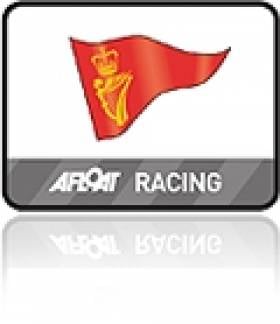Displaying items by tag: dining
Downturn Hits Dining at Royal Cork Yacht Club
The Royal Cork Yacht Club has announced that its dining facilities will close until late spring at the earliest due to a slump in business over the last year, the Irish Examiner reports.
The club recently put one staff member on temporary lay-off and made another redundant following a "significant downturn in all club dining support during 2010", the newspaper reports.
But club admiral Paddy McGlade is hopeful that the restaurant will reopen in April, noting that is it normal practice for the restaurant to close during seasonally slack periods.
He added that it would be "inappropriate" for the club to use its cash reserves to keep the restaurant open in the present climate.
The downturn is affecting a lot of sailing clubs who must wait some months yet before the main 2011 sailing season starts.
The Crosshaven-based club is the home of ther biennial Cork Week, one of the biggest events on the Irish sailing calendar, scheduled to return in July 2012.
'Keenan's of Tarmonbarry' Wins Taste Of Waterways Award
The winner of the prestigious Taste of the Inland Waterways Award was revealed this week by Georgina Campbell as "Keenan's of Tarmonbarry".
Presenting the Taste of the Waterways Award to Keenan's of Tarmonbarry, Martin Dennany, Director of Marketing and Communications, Waterways Ireland stated "Keenan's of Tarmonbarry epitomises the waterway dining experience and I am delighted to present this Taste of the Waterways Award and to commend Georgina Campbell on her choice. With the recent completion of the link between the Royal Canal and the Shannon Navigation, we hope that many will take the opportunity to visit the area and to experience for themselves the delights of waterside hospitality at this fine establishment. Waterways Ireland is happy to sponsor this award and to recognise the contribution that businesses like Keenan's make to the tourism industry".
The Taste of the Waterways Award was first introduced in 2008 and runs in conjunction with "The Taste of Waterways" booklet, a publication produced by Waterways Ireland in partnership with Georgina Campbell highlighting the excellent hospitality of the waterway experience. The guide is free and updated regularly with Georgina's selection of establishments of all kinds serving food and hospitality all along the inland waterways.
Martin Dennany commenting on the guide stated "The judging criteria and standard of assessment for the Taste of the Waterways Georgina Campbell guide is very high, with selection made on merit alone: no payment is charged for entry, no payments accepted for advertising".
Georgina Campbell described Keenan's as "Just beside the bridge over the Shannon in Tarmonbarry, this well-run bar and restaurant has been a favourite watering hole for river folk for many years - and it makes a great place to break a journey between Dublin and the north-west. The range is wide, offering wholesome, hearty fare that pleases all age groups and includes very welcome traditional dishes. But it's for their steaks, above all, that people beat a path to Keenan's of Tarmonbarry - and why wouldn't they? Whether you go for a classic sirloin, a big juicy fillet, or their renowned steak sandwich, the steaks at this hospitable watering hole are not to be missed."






























































